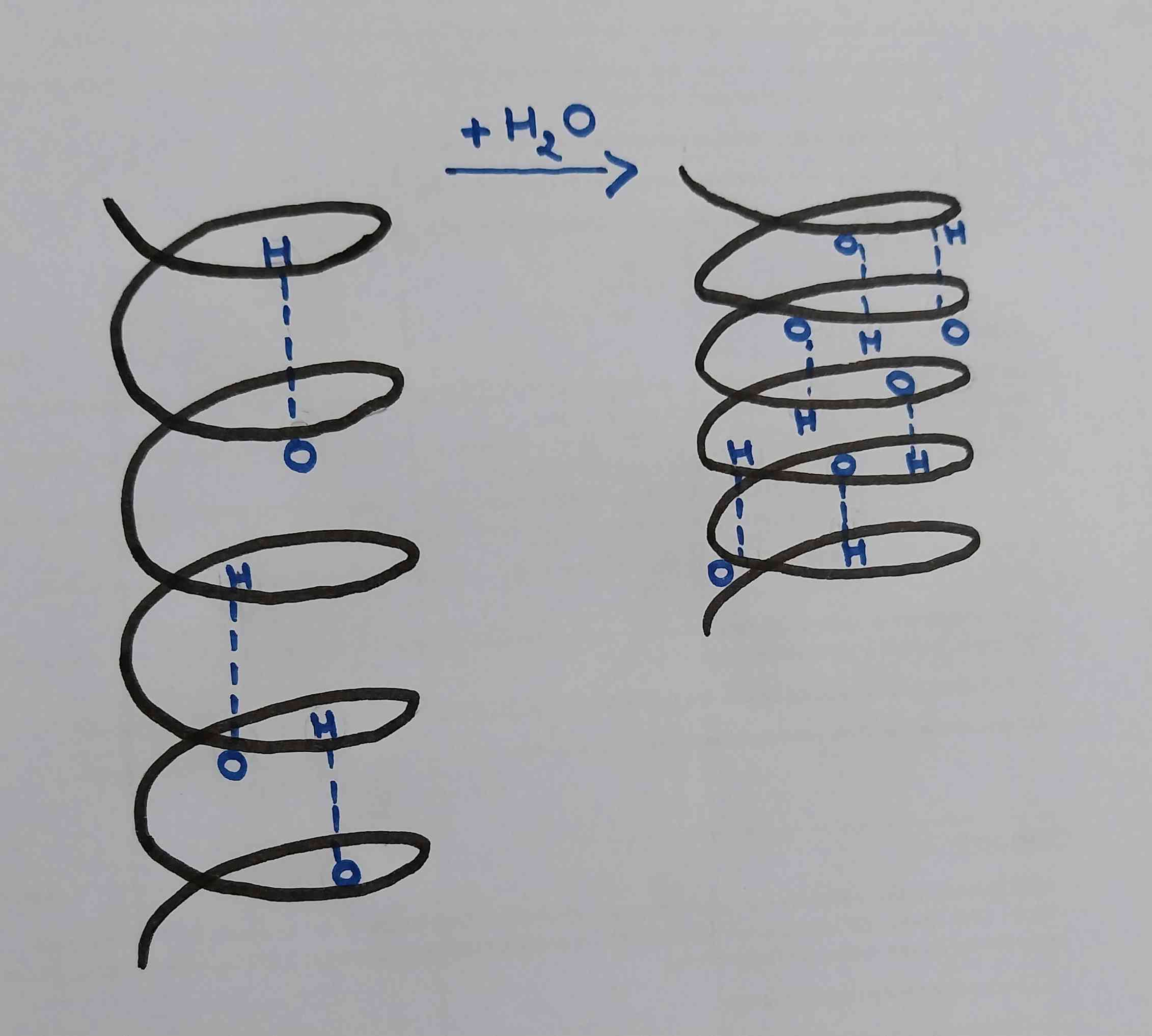Why do hair curl depending on the weather? 🌦️
Published by Adrien,
Source: The Conversation under Creative Commons license
Other Languages: FR, DE, ES, PT
Source: The Conversation under Creative Commons license
Other Languages: FR, DE, ES, PT
Follow us on Google News (click on ☆)
Many people notice that their hair tends to curl or even frizz in humid weather, even if it is naturally straight. This universal phenomenon, however, varies in intensity depending on the type of hair. To understand the scientific reasons behind this frizz, let's dive inside the hair.

Illustrative image Pixabay
The hair shaft (the scientific term for hair), which is primarily made of keratin (a protein), is the visible part of the hair, in other words, the part that emerges from the scalp. It is composed of several concentric layers, similar to a tree trunk.
The medulla, the innermost layer, retains moisture. Its presence varies by hair type and can be continuous, fragmented, or completely absent. For instance, blonde hair, which is often finer, contains little to no medulla.
The intermediate layer, called the cortex, makes up 80 to 90% of the hair and is equivalent to the wood of a tree trunk. The cortex is composed of long twisted keratin filaments aligned parallel to the hair axis and held together by strong bonds, the disulfide (sulfur) bonds, and weaker ones, the hydrogen bonds. The disulfide bonds ensure cohesion and give the hair its strength. When chemical treatments are applied to hair, these bonds are destroyed: the hair becomes weakened and breaks more easily.
The more easily altered hydrogen bonds, on the other hand, determine the hair's shape. These are the bonds that are temporarily broken when using a flat iron or a heated brush to straighten hair. Once these bonds are broken, the hair can be straightened, and once cooled, the bonds reform in their current state, temporarily maintaining the hair in a straight position. Over time, particularly with the air's humidity, the bonds will reassemble in their original arrangement, restoring the hair's natural texture.
Lastly, the cortex is surrounded by the cuticle (scales), the outermost layer of the hair. The cuticle acts like the bark of a tree. Its role is to protect the cortex, but it can be easily damaged by brushing, chemical products (dyeing, perming...), wind, or heat (straightening, sunlight...).
Now that we know more about the hair's structure and composition, how does humidity interact with it to cause these often unwanted frizz effects?
Let's return to the concept of hydrogen bonds. These bonds form due to the attraction between an electropositive hydrogen atom (bearing a small positive charge) and an electronegative oxygen atom (bearing a negative charge) present in keratin. This weak bond is easily disrupted by water, which itself consists of two hydrogen atoms and one oxygen atom.
Indeed, the absorption of water's hydrogen atoms by the cortex increases the number of hydrogen bonds in the hair. Each keratin fiber tends to fold in on itself at the molecular level, leading to a wave or curl in the hair. This phenomenon is known as the humidity-induced frizz effect. Strong bonds (disulfide bonds), however, are not affected by the humidity in the air.

Illustration of the humidity-induced frizz effect, increasing hydrogen (H-O) bonds.
But one question remains: why are some hair types more sensitive to humidity than others?
It all depends on the hair's porosity, which reflects its ability to absorb and retain the moisture in the air. The tighter the hair cuticle's scales, the less porous the hair is, preventing water from reaching the cortex. Thus, damaged or porous hair is more likely to frizz in humid weather. The hair's porosity depends on many factors. For instance, naturally curly, wavy, or kinky hair tends to be more porous than straight hair since the movement of the hair tends to lift the scales.
Similarly, chemical or heat treatments often open the cuticle scales and make the hair more porous. This is why damaged hair (from coloring, straightening...) or naturally curly, wavy, or kinky hair is likelier to frizz in humid conditions. Conversely, "healthy" straight hair is less porous and reacts less visibly to humidity, although it is not immune to slight waves.
Good news for those looking to tame those rebellious strands: there are solutions to reduce frizz. Certain hair products (shampoos, conditioners, or treatments) create a barrier against humidity by waterproofing the hair, preventing water from penetrating the hair shaft. This includes products containing silicones, oils, or moisturizing agents, known for their hydrophobic (water-repelling) properties.